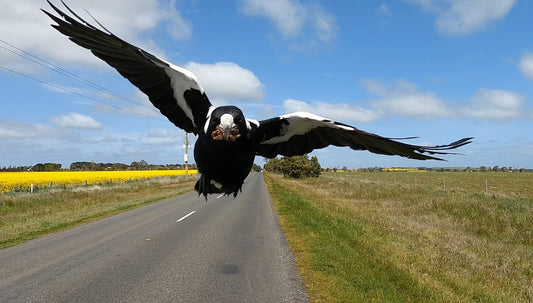Bike-packing is essentially backpacking on a bicycle. The idea is that you distill your worldly possessions down to your absolute essentials, stuff them into a couple of (ideally waterproof bags) and then head off the beaten path. Simple. You’re able to do a tonne more km’s than you would if you were hiking, along roads that are inaccessible for other vehicles. Perfection.
The Essentials
Thanks to the nutty gear boffins who tinker, tweak and transform; ultra lightweight and affordable bikes/gear is now much more readily available, paving (or should I say, unpaving) the way for an influx of curious explorers to try out a new and wildly exciting hobby.
So whether you’re after a local overnight trip or an epic cross-country trail ride, bikepacking opens up a new world of adventure for all. The trick of course, is to save weight without compromising safety.
Having spent 22 months bicycle-touring around the world, I’m able to impart some degree of experience to this mode of travel - I didn’t clock up over 37,000km of dirt and some seriously debilitating saddle sores to serve you up useless gear tips!
Gear 101:
1. A Bike
You’re not going to get very far on a bike-packing trip without a bike, and so it’s deservedly at the top of this gear list.
Now within reason, any bike that you can mount racks or storage bags to is capable of a bikepacking adventure. However, given the fact that terrain varies from forest paths to fire trails, single track to gravelly country roads; it’s wise to use a bike that is capable of handling this diversity comfortably, safely and reliably.
The most common choice is therefore a rigid fork (or lock-out suspension) 29er mountain bike with disc brakes. For those that want the ability to bikepack but also have something for inner city commuting, look no further than the game-changing Reid Granite as it’s the best of both worlds.
2. Gear Carrying
There are a number of ways and fixtures with which you can mount luggage to a bicycle, the trick of course is to avoid carrying a lot of weight on your back and shoulders. By keeping it off your body and lower to the ground, you’ll be increasing the odds of a more comfortable, better handling ride, whilst dramatically decreasing the likelihood of a hunchback in later life.
Traditionally, bicycle tourers have used panniers that clip onto racks above the rear wheel, as well as a handlebar bag for daily essentials (e.g. camera, sweeties, bum moisturizer). The trouble is of course, the more opportunity you give yourself to pile on extra gear the more you’ll do it!
As the wonderful Tom Allen perfectly asserts: “It seems to me that ultralight bikepacking is, for the most part, the art of leaving things behind. Stripping things down to their barest essentials. Not buying gear.”
As bikepacking evolves faster than an EU debate, enthusiasts are now going lighter and more streamlined; skipping racks and panniers for seat, frame and handlebar bags, strapping and tightening everything on meticulously in order to reduce drag and maximise speed.
3. Tools
If you’ve ever found yourself stranded in the rain with a flat tire and no puncture repair kit, you probably appreciate that feeling of frustrating underpreparedness, the inner fury flamed by your own stupidity.
There are only a few things to pack to avoid this tear-jerking distress, and it goes something like this:
- Helmet
- Multi-tool (including a chain tool)
- Bike lights (usefull for night time and if you stumble across a Glow Worm tunnel)
- Spare inner tube
- Duck tape and cable ties
And that’s it!
- Oh, and a puncture repair kit
4. Clothing
Your attire is largely dependant on whether you have masochistic tendencies or just a straight up fair-weather bikepacker. Either way, you’ll need to keep an eye on the forecast and be prepared for cold, wet ‘British summer-time’ weather.
In warm conditions, ensure you use a synthetic (quick-drying) t-shirt and undies. In colder weather, pack warm long merino underwear, beanie, gloves, fleece and a raincoat. Layering is everything in the outdoors and if you don’t know what that is, google it!
Padded shorts, rugged mountain bike shoes and a spare pair for camp wouldn’t go amiss either.
5. Camping
You’ve probably spent the day shredding back country trails like you’re Danny Macaskill after a double espresso, right? Yeah, so you’re now a prime candidate for the most deserving person in the world for a big feast around cockle-warming fire followed by a good night’s kip. Being kitted out for camp is make or break in terms of weekend satisfaction - do not skim or under prepare here!
Make sure you’ve included the following:
- Tent/Hammock
- Sleeping bag
- Stove and fuel
- Utensils and dish
6. Other essentials
You’re almost there. These are equally important items to cram into your bags that can be shared with other riders as you won’t necessarily need one of each.
- Navigation - Map, GPS, Compass
- Food - Aside from your main meals, pack plenty of snacks (trail mix and nut bars are personal favourites)
- Water and a Water Filter device if going longer distance
- First aid kit and sunscreen
- Camera
Above all else, the most important ingredient is you, and your desire to get out there and explore. My gear list is continually evolving and every single time I go bikepacking (or hiking for that matter) I know a little more about what I need and don’t need, what works and what doesn’t. You tend to learn the hard way.
This guest blog was written by Henry Brydon, Founder and Editor of We Are Explorers. We love Henry's passion for adventure and creative writing flair! If you'd like to contribute to Reid Cycles blog, send us an email (info@reidcycles.com.au).



